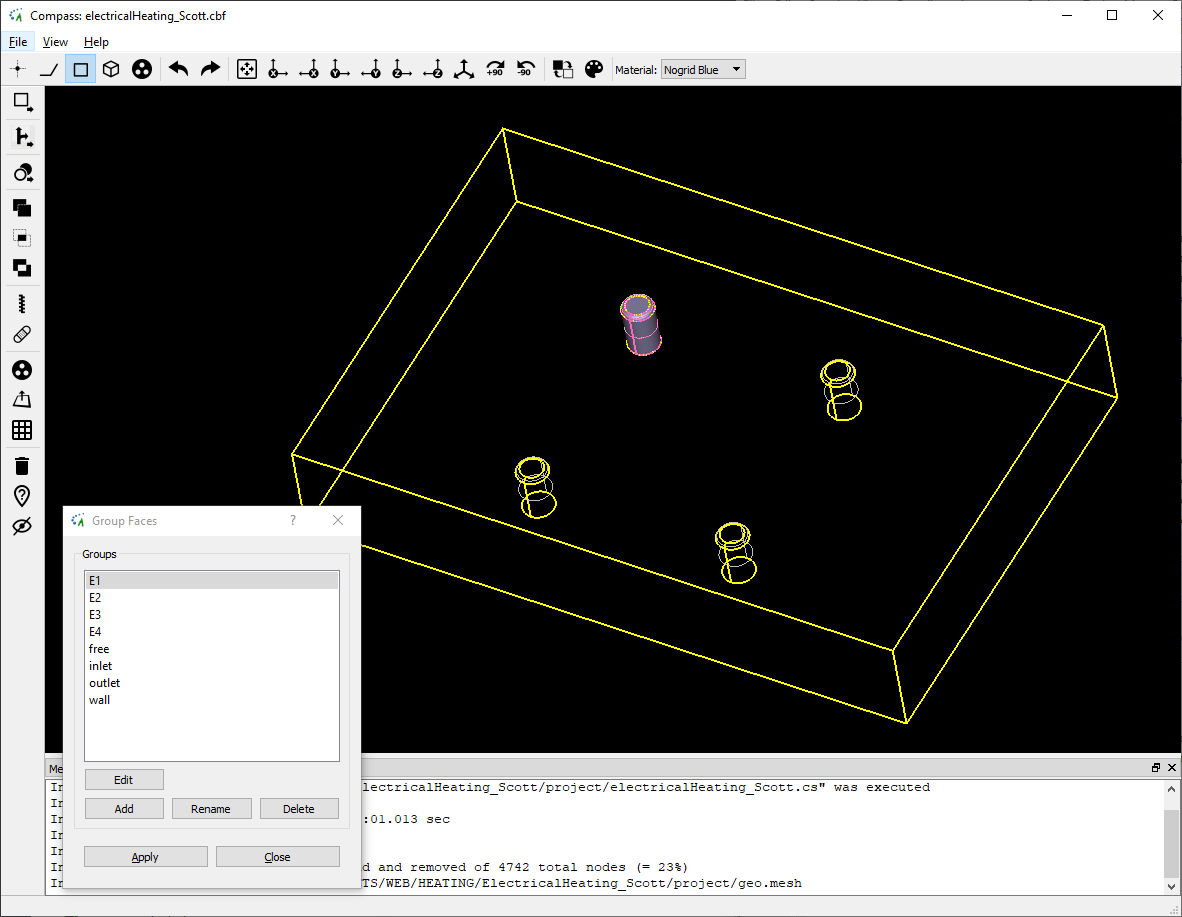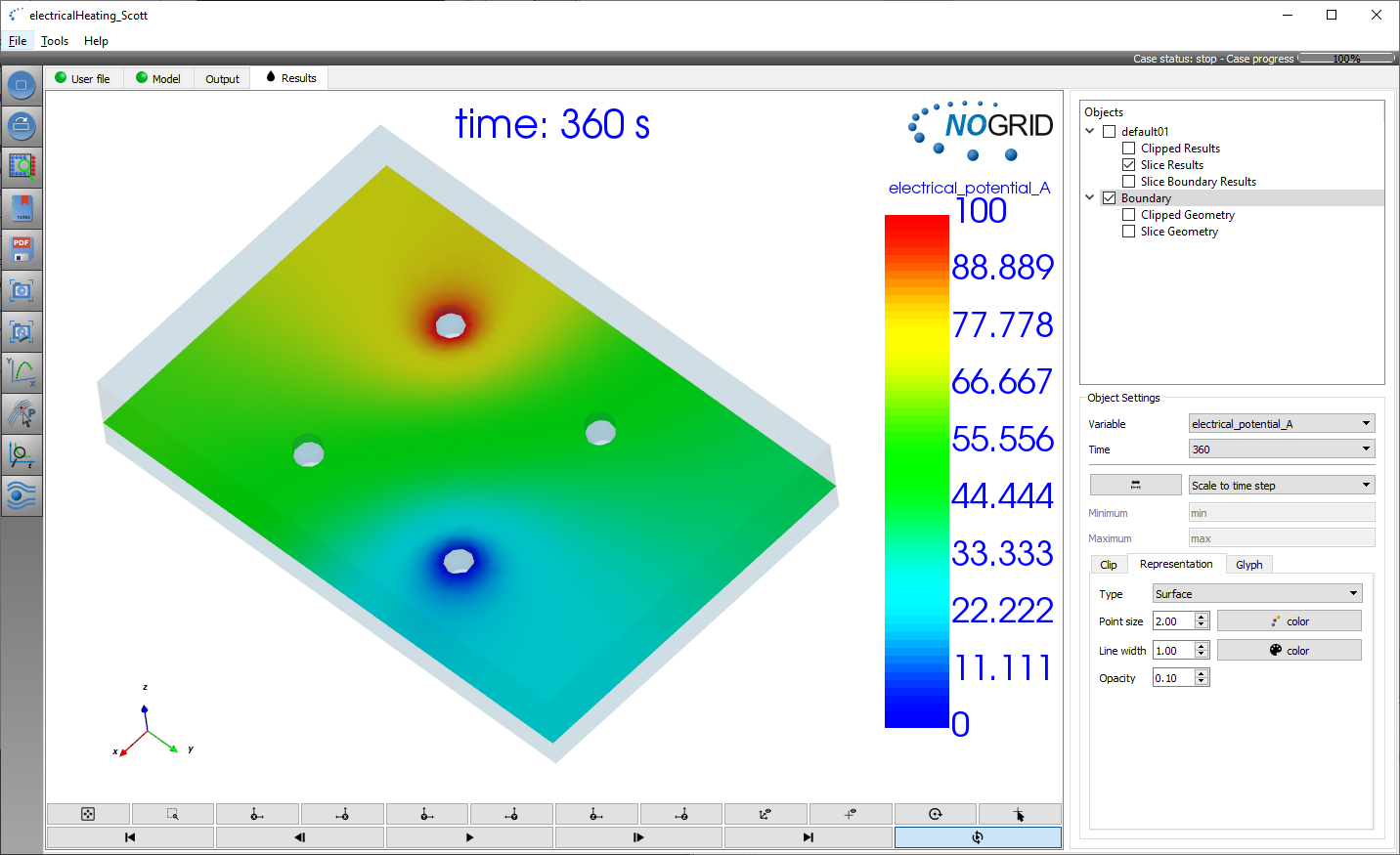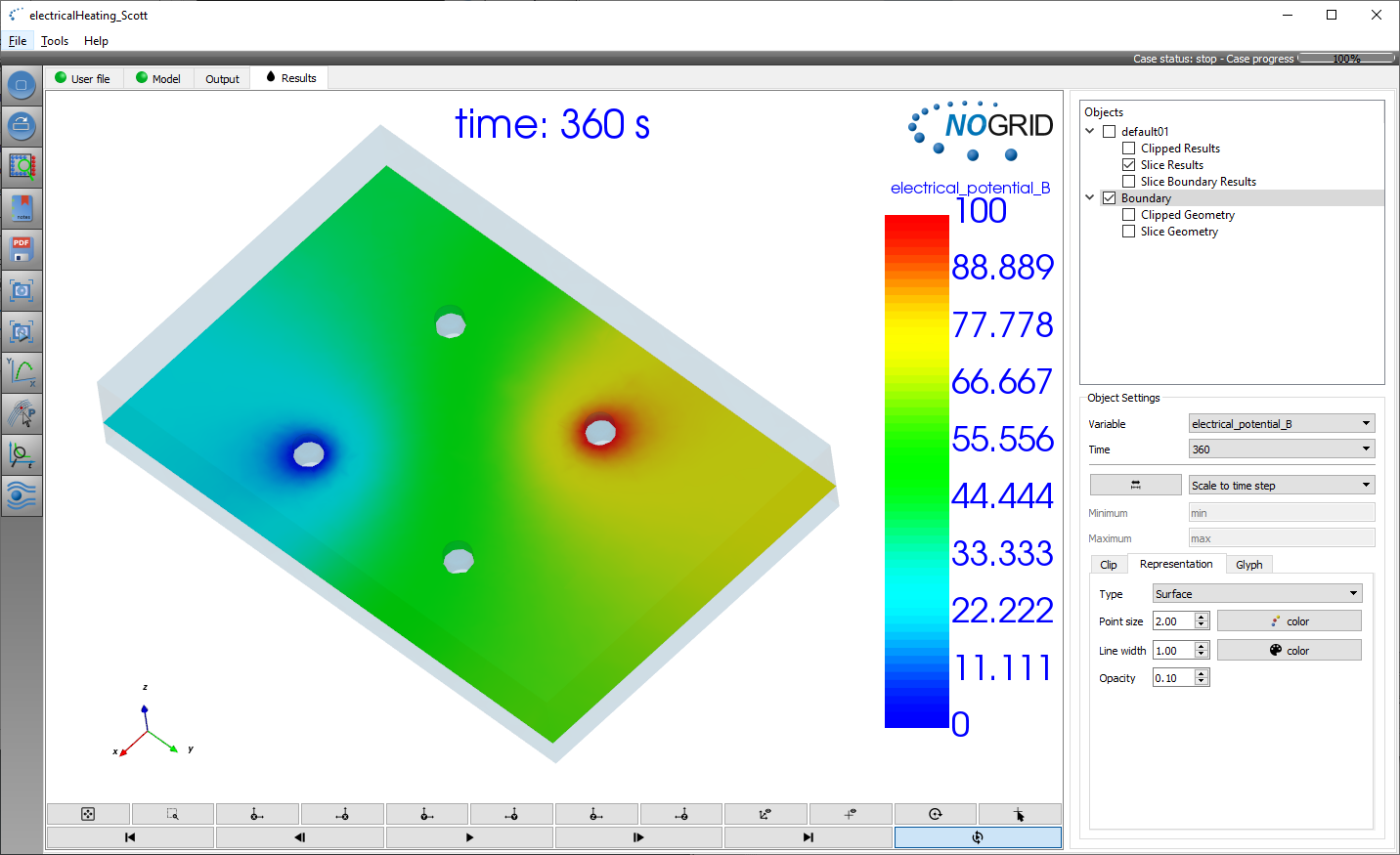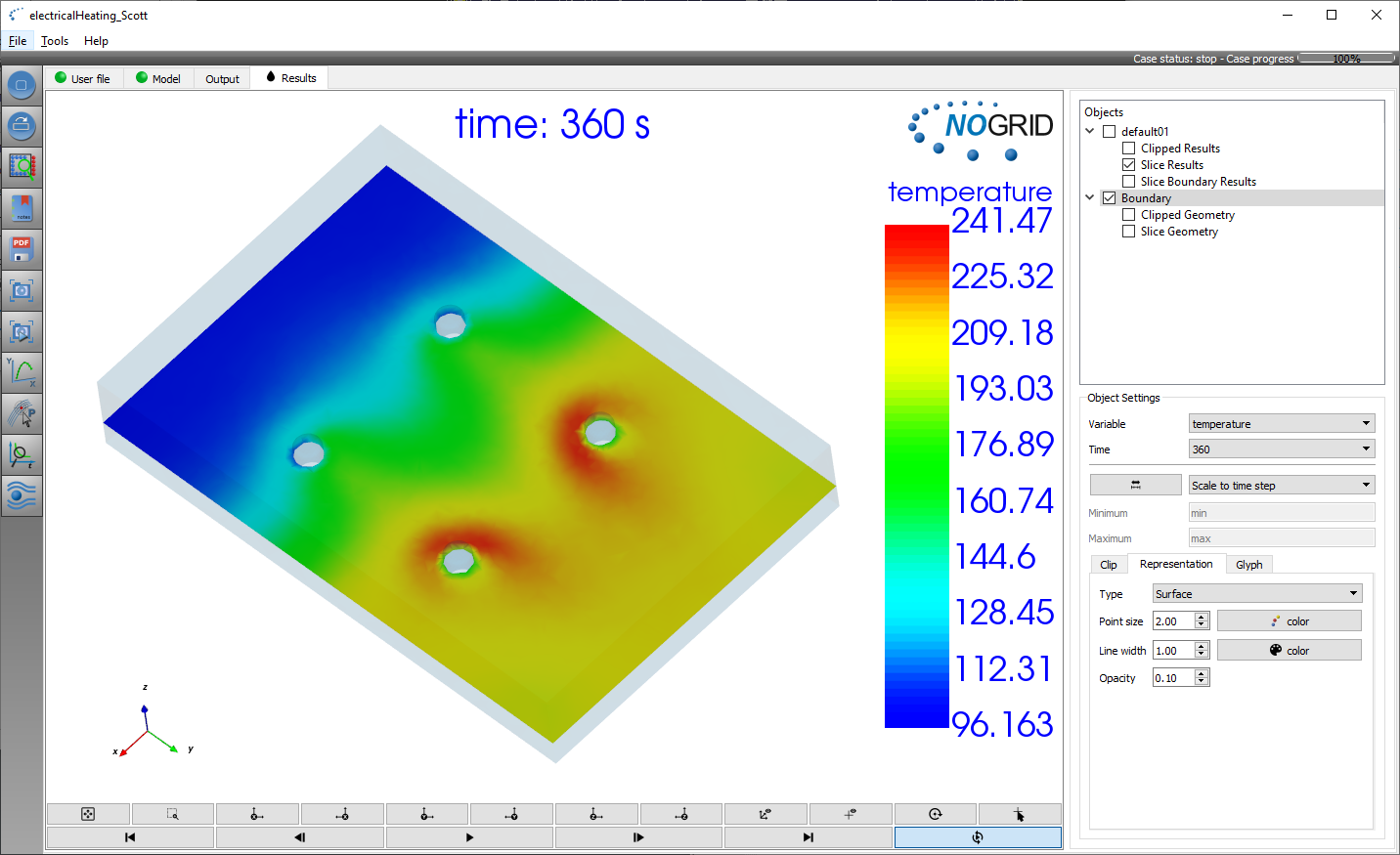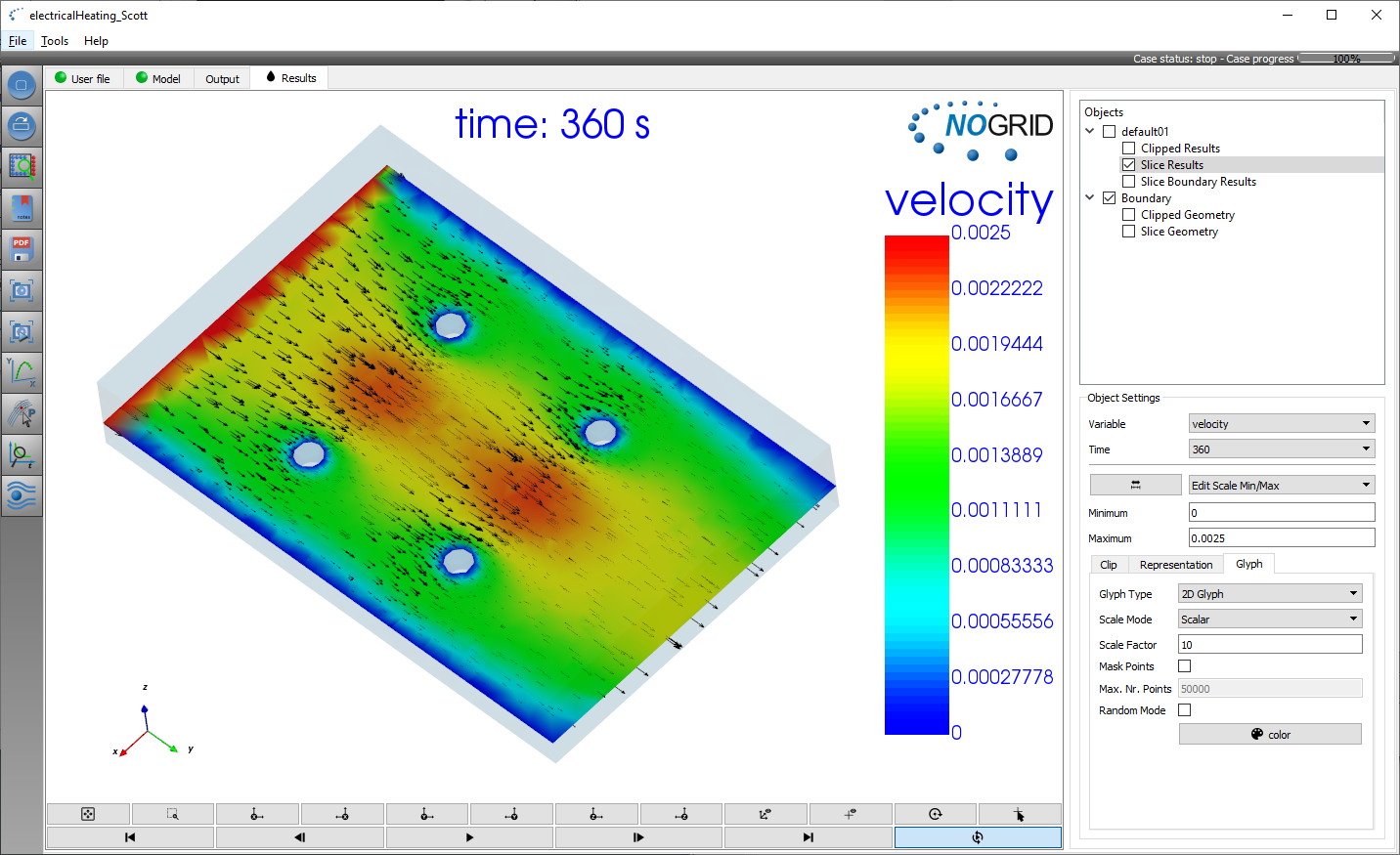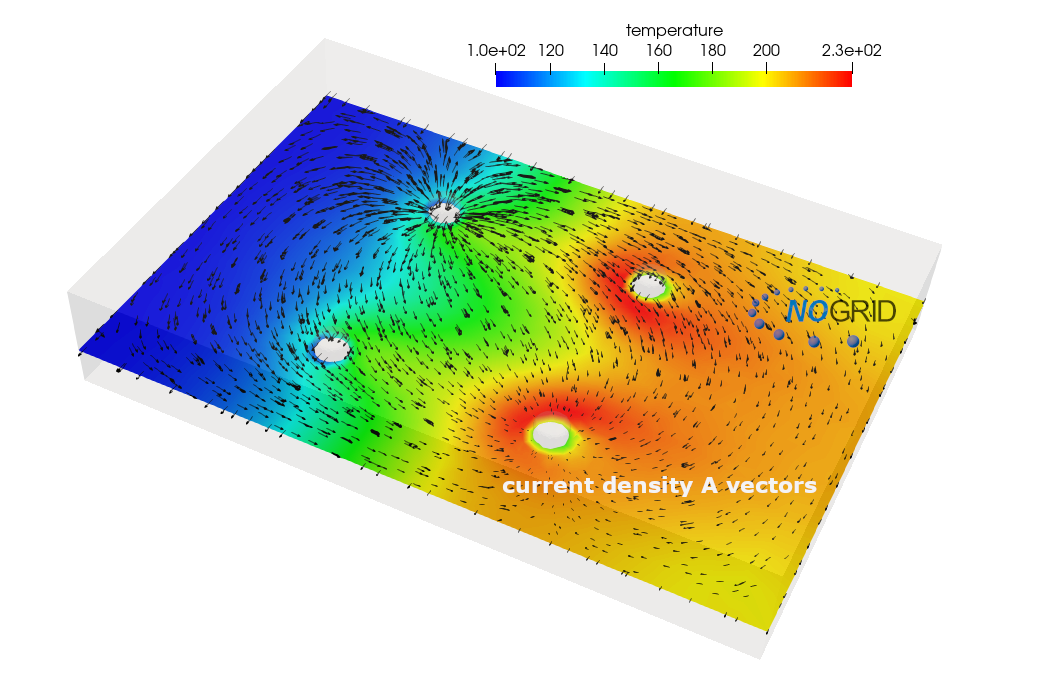Simulation Electrical Heating of a Channel Flow using a Scott Circuit with four Rod Electrodes
This In this case study focuses on the simulation of a channel flow heated by four rod electrodes using a Scott circuit. Using aGRID points CFD software, detailed insights can be gained into both the thermal behavior and fluid dynamics of electrically heated channels.
In this simulation, the rod electrodes are not modeled as solid bodies; instead, their geometric shells define the boundaries of the channel. The electrical potential is applied to these rod electrode boundaries. Because the Scott circuit involves two separate, phase-shifted electrical circuits, the simulation requires the computation of two distinct electric fields. Depending on the flow rate and the arrangement of the electrodes, the electrical resistance in the fluid establishes a specific temperature distribution in the fluid.
Figure 1: CAD created in NOGRID's COMPASS
Figure 2: Electrical potential circuit A
Figure 3: Electrical power circuit B
Figure 4: Temperature after 360 seconds
Figure 5: Fluid velocity field including velocity vectors
Figure 6: Temperature distribution including electrical current field vectors for circuit A
If you want to perform a simulation 'electrical heating of a channel flow by using a Scott circuit with four rod electrodes', the CFD software NOGRID points is the ideal solution. Based on the geometrical model - either imported from your existing CAD system or created using our CAD preprocessor COMPASS - you can quickly generate a computer model of a specific geometry, significantly faster than with traditional mesh-based methods and see its thermal characteristics in advance.
To solve the electrical potential u in liquids and solids, NOGRID points uses the following equation:
![]()
u electrical potential u = u (x, y, z)
σ electrical heat conductivity
q source term
In the field of electrostatics, the electrical potential does not change with time and the valid differential equation for the electrical potential u is the Poisson equation
![]()
Conduction in solids and liquids is described by Ohm's law, which states that current is proportional to the applied electric field. The current density (current per unit area) j in an area is directly proportional to the electric field E and the proportionality factor is the electric conductivity σ:
![]()
The electric field E can be calculated directly from the electric potential u by
![]()
In this simulation, the Navier-Stokes equations, the temperature equation and the Poission equation for electrical potential are computed. Due to the use of a Scott circuit, two phase-shifted electrical circuits are required - meaning the entire set of equations is solved twice within the simulation.
The temperature within the flow is influenced by several factors: the magnitude of the electrical current, the arrangement of the rod electrodes, and the fluid's temperature-dependent electrical resistance. For instance, if the viscosity of the fluid varies with temperature, this temperature distribution will naturally have a direct impact on the flow behavior in the channel.
Benefits of using NOGRID points CFD software
NOGRID points provides deep insight into flow behavior by visualizing mass, momentum, and heat transfer in both single-phase and multiphase systems. The software also delivers integral quantities that can be used to assess heat exchange efficiency.
In addition, NOGRID combines powerful capabilities to handle free surface flows and moving parts within the computational domain. It supports the simulation of any conceivable geometry or operation mode, including:
- fully 3D computation solving complete Navier-Stokes equations
- easy and intuitive setup also for FSI (Fluid-Structure-Interaction) cases
- freely definable material properties by equations or curves
- coupled solutions for electrical heating and fluid mechanic cases
- open or closed domains including inflow and outflow areas (non-batch mode)
- moving of parts and flexible thermal contact behaviour
Nogrid's strengths
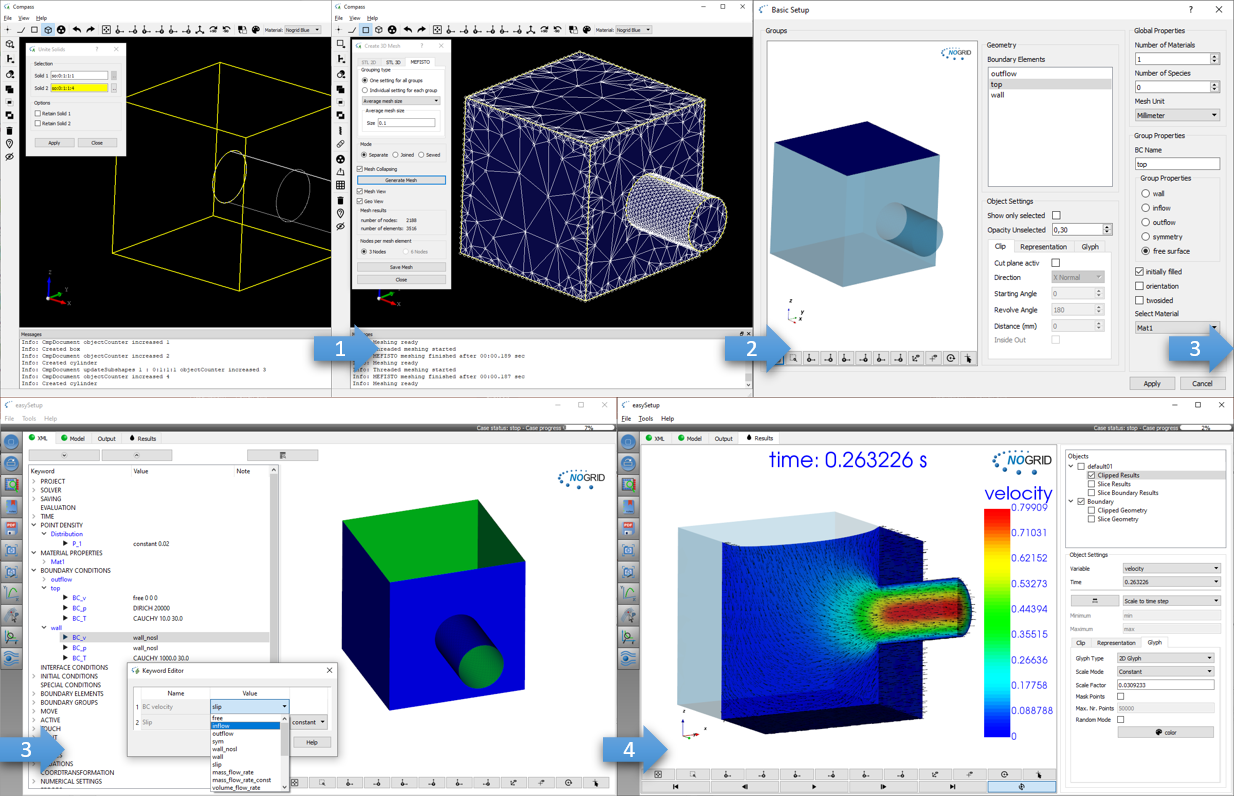
Easy and fast modelling: Build geometry, mesh boundary, setup the case and start computation
What is CFD from NOGRID?
CFD solves the fundamental equations that define the fluid flow process. With CFD software from NOGRID every engineer makes better decisions by predicting, analyzing and controlling fluid flow, heat and mass transfer or chemical reaction. By using NOGRID software for flow modeling you receive information on essential flow characteristics as for example flow distribution. Using it additional to testing and experimentation NOGRID software helps to improve the evaluation of your design – resulting in better construction and operation parameters, increasing planning security and money savings due to faster time to the marketplace for your product or process.
Choose NOGRID
With NOGRID, you choose professional CFD software and services – our aim is helping you to be successful. When you decide to work with NOGRID you choose close cooperation with a dynamic, flat hierarchies-organization. Short information channels result in quick and accurate professional support and service. Our team consists of highly qualified employees, who are experts in fields such as numerical simulation or computational fluid dynamics. Based on our know-how, we are pleased to offer the following services, responding to your individual requirements:
TRAINING
In our two-days training courses you will learn, how to use NOGRID CFD software efficiently. Our technical support team will teach you how to handle and solve different cases.
For more details please refer to Training Courses →
Technical Support
We offer full professional support from the minute you start using our software, by telephone or by email. Contact us, when ever needed.
For more details please refer to Software Support →
Service
Lack of time or resources and other constraints often make outsourcing an attractive solution. We help you with your flow modeling needs. Based on our engineering expertise in this field we offer individual numerical simulation services matching the unique needs of your organization.
For more details please refer to Simulation Services →
About Us
Simulation Software from Nogrid
Follow Us:

